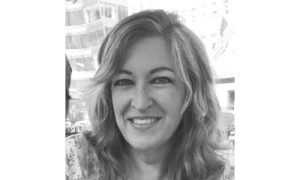I got a taste of my own medicine, and I spit it out abruptly and uncivilly rather than take it with grace.

It was at the plant swap I was hosting last weekend at the Martinsville-Henry County Heritage Center and Museum, of which I am the executive director. But at home, I’m a gardener, and I love sharing my plants.
I had been bent over in an unladylike manner over some trays of perennials. As I stood up, I caught sight of Jessica Dillon, the Enterprise’s new reporter, taking a picture of me.
With all of the authority of my advancing years – I might be twice her age, my how time flies – and of being the director plus a former newspaper editor to boot, I boomed with authority, “No, do not take my picture.”
With a look of surprise, she lowered her camera.
Surprise and shame flooded me, and those of you who know my previous career are chuckling now: For more than 20 years, I took pictures of people both with and without their permission, and put them in the newspaper and online. Shoot, there’s a pretty good chance I have taken your picture.
But there I was, looking dreadful, I was sure. I didn’t mind being dirty; dirt is to be expected at a gardening event. Rather, I had not fixed my hair that day, and my lipstick surely had worn off by then, and I was still wearing my glasses, and worst of all, I was not standing straight with good posture and holding in my tummy.
Early on in my reporter days, I had learned that for every one picture I wanted to put in print, I should take about 30 pictures. Each of the 30 pictures should be slightly varied; hold my camera at this angle, shift it to that. The person’s head may tilt this way one moment and that the next. It’s amazing how the slightest variation can make the difference between a good and bad picture.
Out of those 30, I’d always pick the one in which the lady looked the best. If there were more than one lady, I’d take even more pictures than that, so the ladies’ good moments lined up in the same photo. I must say, with men, it’s easier, because generally they don’t seem to care as much.
And as a woman, I care. I got my lesson the hard way.
Back when I was starting out, I won an award for professional women in my hometown, and then went on to win a regional award. The moment of shining glory, I was sure, would be when the announcement with my picture came out in the newspaper. (This was before I worked in newspaper.)
To prepare for that picture, I fixed my hair in a way I didn’t usually trouble to do: The night before, I twisted my locks and wound them around cotton strips which I rolled up and tied in place, to give myself the curliest of curls.
I didn’t know about false eyelashes back then, but if I had, they would have been on me.
I waited all week for the newspaper to come out, and when it did, I turned straight to my exciting announcement.
My heart sank and hot flashes of shame racked my body.
I looked ridiculous. The photographer had crouched before me to take the picture, so I just looked like a huge looming torso topped distantly by a small, skinny face which was surrounded by wiry squiggles poking out from my head.
What should have been one of the biggest thrills of my life was, instead, reduced to an ugly picture I thought would haunt me forever.
As the years went by, the haunt turned into a compassion and care for taking pictures of other people. When it was my turn behind the camera, to put people in the newspaper, I took efforts to make their pictures something they’d treasure, not hide.
Shortly after I had snapped at Jessica, I went up to her and apologized. I tried to joke it off and make amends, and I told her that I, of all people, should have been more respectful a journalist and simply let her do her job.
Dr. Mervyn King, who lives next to the museum, had strolled over to visit with the folks.
“The question is, did she break the camera?” he asked Jessica, laughing.
“I thought I might at that moment,” I replied.



